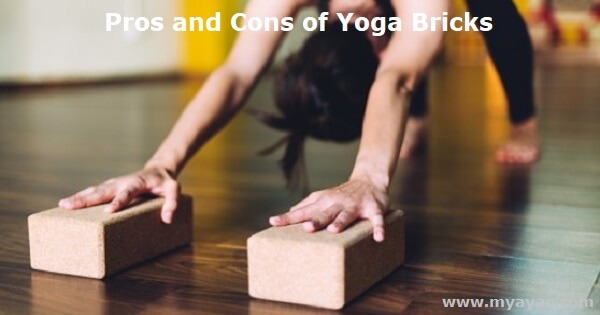There are around 7000 registered yoga studios in the US alone, and it's usual to see some props that help practitioners. In fact, you may also come across some cuboidal-shaped structures in your yoga class. These blocks or bolsters are helpful props for yoga and are known as yoga bricks. They help you maintain the correct posture, improve your balance and increase the intensity of your stretch. Besides numerous uses, they can also come with troubles, especially if you perform exercises in your small room. Here are some of the Pros and cons of Yoga bricks you need to consider.
A yoga brick can bring you several benefits while you practice. Be it your room or a studio, you can carry a couple of blocks anywhere at your convenience anytime. The following are some pros of yoga bricks.
Yoga Bricks are lightweight and have a firmness that helps to give the body the extra support it needs to maintain proper alignment in yoga poses. If you have difficulty maintaining alignment or are new to yoga, using blocks can help you ease into the pose without over-exerting your muscles.
Incorporating blocks into your yoga practice can also help improve your balance. This is because they provide a stable surface to place your hands or feet, giving you more stability and control while performing balancing poses. You can also hop on to advance yoga poses, which add further to the pros of yoga bricks.
If you are looking to increase the intensity of your yoga workout, blocks can help by allowing you to deepen stretches and add resistance. For instance, placing a block under your hand in a forward bend will increase the stretch in your hamstrings.
Because yoga blocks offer support, they can also help you feel more relaxed in certain poses. This is especially beneficial if you are struggling with anxiety or stress. By propping up your legs or arms with blocks, you can release any tension you may be holding in your body and fully relax into the pose.
You will find yoga blocks in different sizes, colors, and shapes. You can pick the one that suits your need the best. The most common shape is rectangular, but you will also find them in triangular and cylindrical shapes. Yoga blocks are usually made from wood, cork, foam, or even recycled plastic.
Despite the many benefits of yoga bricks, there are also a few drawbacks.
One of the main cons of yoga bricks is taking up valuable space, especially if you are practising in a small room. If you constantly run out of space, it may be best to ditch the blocks and try other props that take up less room.
While yoga blocks are relatively inexpensive, they can still add up if you need to purchase multiple sets. Other props can achieve similar results without breaking the bank if you are on a budget.
Although blocks can be used in various ways, there are still some poses where they are not appropriate or necessary. You may find yourself not using them as often as you thought, which can be frustrating if you invested in a large set.
If not used properly, yoga blocks can increase your risk of injury, especially when the floor is slippery. They provide extra support that can cause you to overstretch your muscles or put too much pressure on your joints. If you are new to yoga or have any injuries, it is best to avoid using blocks.
Depending on the material, some yoga blocks can be challenging to clean. For instance, if you are using cork blocks, they will absorb sweat and become stained over time. You may need to replace them more often than other types of blocks.
Conclusion on the pros and cons of yoga bricks
Overall, yoga blocks can be a great addition to your yoga practice. If you are limited on space or budget, other props may better suit your needs. Additionally, if you are new to yoga or have any injuries, it is best to avoid using blocks. If you feel comfortable using them and have the space to do so, they can be a great way to enhance your practice. Yoga Bricks come with their own set of pros and cons. Weigh these factors before deciding whether or not they are suitable for you and your practice. Namaste!
Yoga bricks, or yoga blocks, are the most frequently used yoga equipment. They assist with alignment, support the body in postures, and make some positions easier. Blocks may be beneficial to safely modify postures if you're new to yoga or have any physical disability.
The Gaiam Yoga Block is an excellent choice if searching for something traditional and basic. Gaiam's Yoga Block is made of EVA foam, which makes it sturdy enough to support you while performing challenging postures yet light enough to carry with you. Use yoga blocks in various sizes and materials to bring the floor closer to you in standing postures and give more significant support in seated and reclined exercises.
Another adequate substitute is a firm cushion. Sit on a towel or blanket. When your outer knees are butterflied in a Reclined or Seated Bound Angle pose, folded towels support them too. To relieve your spine and make it more pleasant, use a rolled-up towel or blanket instead of placing blocks beneath your knees in Savasana.
Beginners may enjoy using foam or cork yoga blocks, which are great for everyone. It all depends on your preference for one type; you may also get different blocks to practice various yoga postures with.